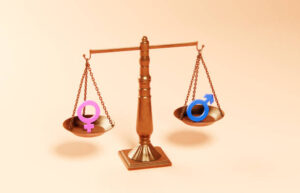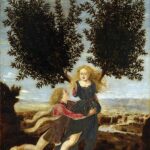
The Poison of Misogyny: Part III
In August of 1942, Walt Disney released the classic animated film, Bambi. When it was rereleased some years later, my mother took me on a
![manteg1[1]](http://jeanraffa.files.wordpress.com/2011/12/manteg111.jpg) Fascinated by the inner forces that influence human attitudes and behavior, I’ve spent years trying to understand archetypes. Nobody can describe them with any certainty because they are deeply unconscious. However, there are many theories based on research and careful observation of human nature.
Fascinated by the inner forces that influence human attitudes and behavior, I’ve spent years trying to understand archetypes. Nobody can describe them with any certainty because they are deeply unconscious. However, there are many theories based on research and careful observation of human nature.
In August of 1942, Walt Disney released the classic animated film, Bambi. When it was rereleased some years later, my mother took me on a

What is misogyny? Here’s a random sample of definitions and descriptions from the internet: Misogyny is hatred of, contempt for, or prejudice against women or

Fred and I just started watching the critically acclaimed award-winning television series Mad Men. It’s about people who work at an advertising agency on New



Website design and development by Chad Lieberman
0 Responses
Reblogged this on lampmagician.
Many thanks for reflagging this.
Thank you Jean for this particular post. I have recording my dreams lately – I seem to have little choice- they have been screamin at me -and getting louder- so it seems wont stop till they are taken notice of. Thus I am subscribed to you ( and a couple of other Jungian inspired sites). I’m looking forward to the feminine archetypes post from you. Merci
You’re very welcome. And welcome to my site. I hope you find some answers here. Dreams that ‘scream’ are a sign that you’re ready to deal with whatever they’re trying to tell you, so you’re wise to take note of them. They’re an invitation to grow, and while we usually resist growth at first, we’re never sorry in the long run. Good luck with your study and dream work.
Thanks Jean – you’ve brought clarity for me on the masculine archetype and it’s two extreme expressions and the journey in between, applicable to both man and woman. And it’s hopeful that the two energies of the male and female archetype will one day blend and each enhance the other. I look forward to the feminine archetype post 🙂
Thanks, Susan. So glad to know this brought clarity. I, too, hope for a future in which the ‘Sacred Marriage’ is a common condition.
That was tremendous Jeanie! I got a real sense that although I could acknowledge the traits of all four of the masculine archetypes you refer to, it is most often that I find my Lover and Magician engaging together in delightful, poetical alchemy … on the inside these two seem to work wonderfully well together … looking forward to see which feminine energy they’re going to be paired up with.
In Tarot (for me) Lover and Magician suggest The Fool and The Magician, therefore I conclude, these are more developed than my present day King and Warrior energies. I love how you mention that when each is fully developed and partnered with likewise mature feminine vitalities we come to be authentic and real … yours was a great depiction!
As I’m writing I realise that writing online is a abundant way to develop my extraversion and thinking roles, another subject I know yet on parallel lines it all goes a little way further for me in restoring the harmony and balance within. Great subject matter, very much looking forward to reading about those feminine archetypes next. Blessings, Deborah.
Hi, Deborah. I like your observation about the connection between Tarot and the archetypes. The same would be true of I Ching, Astrology, and other oracular symbol systems…..all are outgrowths of—and ways to understand—our own archetypal inheritance. And your sense that writing online helps develop your extraversion and thinking is very interesting….the same feels true for me. It is all about discovering and developing hidden potential and finding balance, isn’t it?
In typological language being an INFP (for me) means that my Extraversion and Thinking functions also need airtime so I find the internet perfect for ‘coming out’ of my deep Introversion by writing a blog and discussing with others, many thought-provoking and wide-ranging articles. Although Feeling is my superior function, I embrace the joys of walking, mountain climbing and cycling … which more than compensates for my lessened Sensate function I feel … so less struggles there.
I think this is why I find your article so interesting Jeanie because you’re speaking about a psychological truth which cannot be ignored if we are to avoid becoming one-sided. I’m one of those who thinks and types all at the same time so now I’m thinking perhaps The King (for me) represents my Thinking function and Warrior my Sensate function … I accept for others that would be completely different. Oh you’ve given us so much meat-on-the-bone here! Blessings, Deborah.
I like your analysis and comparison of the archetypes with typology! You’ve really thought it out well. I love how you keep gnawing away at those bones! 🙂 Jeanie
Hi Jean,
It has been a couple of years since I have remembered and recorded my dreams but the one I had night before last left me afraid when I awoke. I couldn’t figure out why as it seemed fairly innocuous.
Your post today provided a clue.
Here was my dream: My husband and I were out enjoying ourselves and decided to go home. However, the house we entered was large, airy and unfamiliar and I was afraid that two men, I did not know, were after me — coming to get me. I locked all the doors and went upstairs and asked my husband to be on the look out. A woman came to the door, he let her in, she came upstairs and started talking—not letting me get a word in. She was pleasant but I was somewhat annoyed with her chatter and still feared the two men who were after me would show up.
In recent months I have decided to satisfy the “closeted” interest I’ve had over the years in Astrology. I would openly undertake a thorough study of what most in my academic/scientific culture, where I had a successful career, would judge as pure lunacy. Could it be that the two men in my dreams are my old animus wanting to punish me for my lack of conformity. And the talkative woman is my underdeveloped anima who I fear could become a magpie with little to say.
Hmm, what dreams are made of……One’s journey as a crone is truly interesting–your Jungian insights, most helpful.
I’m glad you are once again blogging
Sally
Sally Palmer Thomason spt794@comcast.net sallythomasonbooks.com
>
Hi Sally, it’s good to hear from you. Your interpretation of your interesting dream resonates with me. I think you really got to the meat of it. Back when I was first experimenting with being true to myself instead of conforming to patriarchal expectations I had similar dreams about being afraid of threatening men and saw the same meaning in them. I think many women don’t realize how much they limit themselves for fear of criticism from male authority figures. It’s so freeing to get over that! Glad you found this interesting and helpful. Jeanie
Jean, Thanks for the very interesting and educational post. I see the dynamics in my family and in me. I think my masculine side has grown into the Lover. However, I saw a great deal of the King from my family. I had a great deal of growing and changing to do. I am very curious about the feminine side of me to see how she interacts with her male side. Thanks for the inspiring post.
You’re very welcome. Thanks for writing. I hope the next post will be as interesting for you.
It was easy to project these archetypes on my husband when he was alive. Since his death, my dreams are full of masculine characters. Most recently, my husband/warrior driving my little red Subaru like race car, stirring up the dust of the Underworld. (I never mistake my dream character husband for the living man, by the way. He’s just the most powerful projection of many aspects of the masculine, all fine-tuned by 42 years of doing psychological and spiritual work together.)
I had a King/Lover dad and it was easy to project that one on male teachers. In 1994, while visiting Sankara, a Hindu sage in southern India for the third time, the 99-year-old guru died. At his all day-funeral attended by hundreds of thousands, a mantra sprang up in my head “This is the Death of all the Fathers. This is the Death of all the Fathers.” I didn’t stop for 24 hours. I never forgot. I knew it was my job to stop projecting spiritual teacher out and work with this archetype within. It’s slow going. I feel closer and more at ease with the feminine archetypes, but there is a demand to differentiate the Ruler, Warrior, Scholar/Spirit Guide, and Lover. Thank you for helping me consider this moment in time through these archetypes.
Great comment, Elaine. It’s full of especially wonderful insights.
For example, the mention that you never mistake your dream character husband for the living man. That’s an excellent point that needs to be made if dreamers are to look deeper into the meaning of a symbol without taking images literally. Another wonderful quote: “He’s just the most powerful projection of many aspects of the masculine.” The same is true of me; my husband often carries positive aspects of my animus in my dreams. In fact, he did just that only two nights ago when he/my animus gave me some helpful and well-timed advice about not overlooking priorities.
The ways you have projected your animus over the years is also an especially pertinent insight that many of us would do well to notice and remember. It is, indeed, slow-going, and very tough, to empower your own archetypes instead of only finding wisdom in outer people……..especially difficult when trying to connect with your own anima/animus instead of projecting her/him onto your partner, then getting mad when s/he can’t read your mind and won’t conform to your image!! If people really understood this, that awareness alone would be enough to drastically reduce the divorce rate!
Thank you for the many gold nuggets you drop here.
Food for thought! Sides of our being. The being of our various sides. I have trouble keeping stoplight colours straight (not really but…) so this is a lot of defining and definition to keep straight! I also find fascinating how each masculine quality is capable of transformation, evolving or devolving.
It’s taken a while to realize most people aren’t as compelled to clarify things like this as I am. But to my masculine Thinker, making these sorts of distinctions and connections is absolutely fascinating, necessary, and enlightening. Sometimes I figure things like this out and feel like the lone voice in the wilderness who hollers, “Look! Look! Don’t you see how important this is? Knowing this can transform your life!!” And there’s no one there to listen but the trees. Hmmm……Maybe this is why the Lone Ranger had such a profound impact on me as a child? 🙂
Maybe so! And he had that mask mystery going on too. :- )